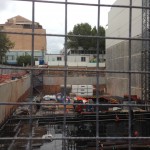DATA NEWS We love data!
Data signals end for property bulls
The latest data shows that Australia’s property boom is deflating, but the key question is by how much?
According to the CoreLogic RP Data capital city home price value index was unchanged in December, with prices ending the 2015 year up 7.8 per cent. But what really happened was that dwelling prices rose in four of the eight capital cities in December but in the biggest market – Sydney – property prices fell by 1.2 per cent after sliding 1.4 per cent in November. It was the biggest back-to-back decline in seven years.
And now comes the confirming news from Fairfax Media’s Domain group that prices, at least in Sydney, are on the slippery slide. Median houses prices for the December quarter fell 3 per cent. Melbourne, Brisbane and Adelaide held their ground between plus 1.8 and 1.5 per cent. Apartments in Sydney were also down 2.8 per cent joining Brisbane which retreated 1.1 per cent. Melbourne was once again a holdout, improving 1.3 per cent.
New home sales were already down for the third straight month in November, down by 2.7 per cent to 16-month lows. More worrying was that sales of multi-units fell by 15.1 per cent against detached houses modest rise of 1.1 per cent.
But the numbers that got all the attention were the forward indicators on building approvals. Dwelling approvals fell by 12.7 per cent in November, dragged down by a 24 per cent fall in apartment approvals. Approvals fell 35.5 per cent in Victoria.
But this needed to be put into perspective. Over the past year, 231,489 new homes were approved, only slightly down from the record high of 233,186 approvals in the year to October. That latter figure was up 72 per cent on a year ago!
The Housing Industry’s chief economist, Harley Dale, told the Australian Financial Review that a “confluence of factors” was driving a decline in the leading indicators of new home construction.
“The lagged effect of slowing population growth, an up-tick in variable mortgage costs, over-reach on the part of APRA’s credit controls, and an easing in property price growth in Sydney and Melbourne are all in play,” he said.
He might have added that supply is fast catching up to supply, particularly in the apartment market, and investors are worried about the possibility of declining yield.
Residential rents across the country gained just 0.3 per cent last year with Melbourne holding the line with a 2.2 per cent growth in 2015, while Sydney notched up 1.9 per cent, according to CoreLogic RP Data.
Canberra and Hobart were also up but elsewhere rents fell, lead by an 8 per cent decline in Perth.
The role of Chinese buyers in the apartment market is also under question as China tries to restrict the amount of money leaving the country with the Chinese Yuan under renewed pressure to devalue.
So while it looks gloomy on the property front – for everyone except first-home buyers – the building industry still has a lot of work going on well into 2016, which should see it continue to contribute to economic growth.
And from an investors’ viewpoint, property at the right price might still be attractive especially if the share market’s volatility continues into the New Year. Any yield is better than no yield!
But then again the latest hints from Canberra that the government’s tax review is having another look at negative gearing, perhaps with a view to capping the amount of deductibility, might just be the last straw for Australia’s great property boom of the early 21st Century.


